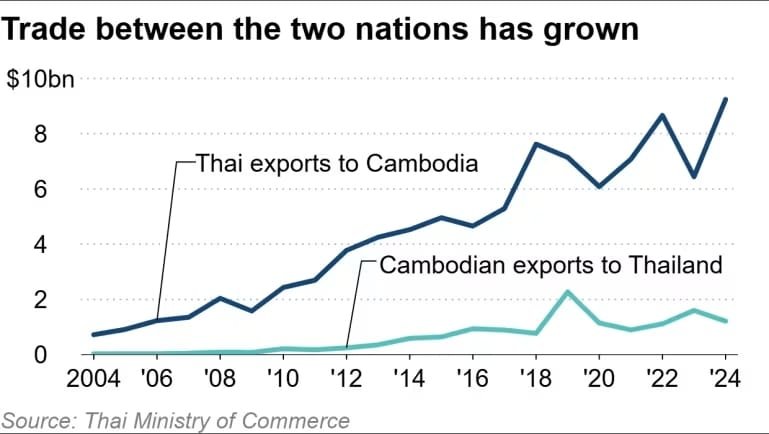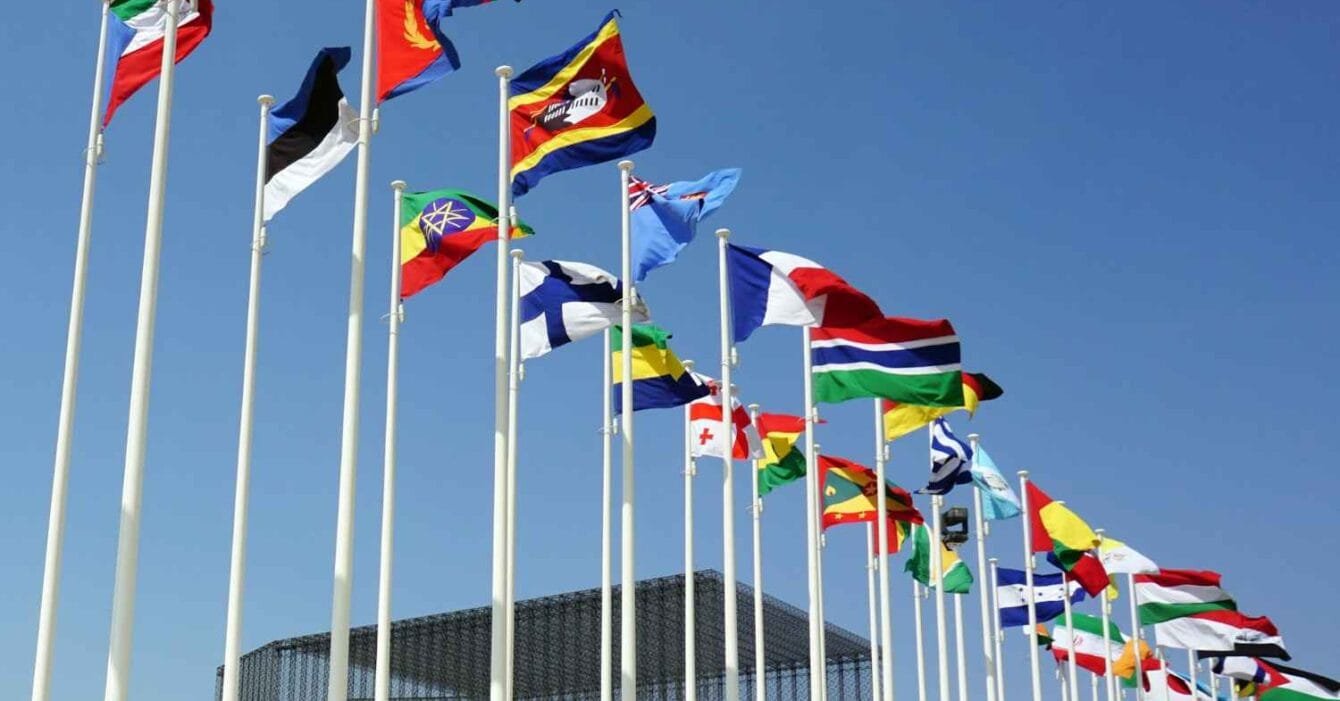Trade between Cambodia and Thailand is picking up speed after months of tension and disruption. The Cambodia Border Trade Restart marks a turning point for both nations, as trade channels reopen and cooperation improves.
Cambodia Border Trade Restart: Trade Rebounds Fast

In the first five months of 2025, border trade between Thailand and Cambodia reached 80.72 billion baht, an 11.2% increase compared with the same period in 2024. Thai exports rose to 63.07 billion baht, up 9%, while imports from Cambodia climbed 20% to 17.64 billion baht.
The numbers tell a clear story. Both sides are moving quickly to restore trade flows and stabilize their economies. In May 2025 alone, trade hit 16.11 billion baht, a 7% rise year-on-year — proof that business confidence is returning fast.
Economic Resilience Seen Through the Cambodia Border Trade Restart
Even during the height of border tensions, Cambodia’s economy held firm, growing at a steady 6-7% annually. This resilience came from diversification. By welcoming investments from multiple partners, especially China, Cambodia reduced its dependence on Thailand.
This strategy paid off. When trade routes reopened, Cambodia was not starting from zero. Its industrial zones and infrastructure projects were already in place to handle renewed cross-border activity.
Avoiding Billion-Dollar Losses
The stakes were high. Analysts warned that Thailand could lose up to $1.85 billion in trade in 2025 if border tensions dragged on. Diplomatic efforts helped both nations avoid that loss. The quick restart of border trade reflects not only economic urgency but also political will to maintain regional stability.
After de-escalation, Thai exports to Cambodia grew 6.2% while imports jumped 20% early in the year. These figures show that both economies are not only recovering but also expanding trade faster than expected.
Efforts to Rebuild Trust and Stability
Before tensions, Thailand enjoyed a 109.2 billion baht trade surplus with Cambodia, showing strong but imbalanced trade relations. Despite disruptions, Cambodia made efforts to reassure Thai investors of their safety and stability. The government strengthened special economic zones (SEZs) near the border to support smoother logistics and cross-border trade.
Such measures have encouraged Thai companies to resume operations. Many had paused exports or scaled back production during the conflict, but normal activities have now resumed.
Read Also: Cambodia Border Tension Effects on and Investor Fears
The Cambodia Border Trade Restart and Renewed Partnership
Bilateral trade between Cambodia and Thailand reached $42.15 billion in 2025, showing a 15.5% year-on-year rise at one point — clear evidence that both sides are committed to cooperation.
This growth shows how fast trade can recover when governments act decisively. It also demonstrates the importance of diplomacy in protecting regional economies. Both nations now see border trade not just as business, but as a foundation for peace and shared prosperity.
What’s Next for Cambodia Border Trade Restart?
Cambodia’s ability to maintain growth under pressure, combined with Thailand’s quick response to resolve disputes, has created a more stable environment for future trade. The border may have been closed, but the relationship was never broken. Now, both nations are proving that economic cooperation is the best path forward.
Read Also: Cambodia’s Trade Deal Ambitions Spark New EU Pathways in 2027
The Cambodia Border Trade Restart is more than a recovery story. It’s a sign of resilience, adaptability, and renewed trust between neighbors. With better-managed borders, upgraded SEZs, and stronger investor confidence, the two countries are positioned for sustained trade expansion. The 11.2% trade growth and Cambodia’s steady GDP performance highlight a balanced comeback.
